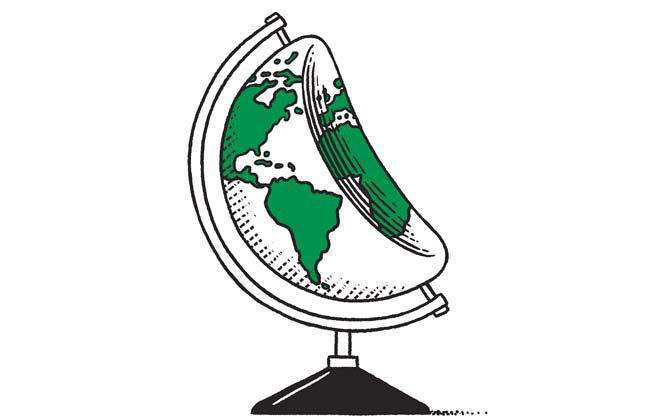
Yes, there are trade-offs. We discovered that. Trade-offs not only in astrophysics but in life.
I remember Shep became interested in folding planets in half when we were in high school. He got kicked off the tennis team for folding the tennis balls. We'd show up for practice and unfold them. You squeeze them and they pop back out. That was the moment of inspiration—that popping sound. Shep said, Do you have any idea how much energy is being released?” To me, it seemed like only a modest amount, but he said, Just one tennis ball, folded in half, could power this watch for almost half an hour!” He was still wearing a windup watch at the time.
Nobody else had his vision. He was the first to demonstrate the theoretical possibility of giant atomic-powered hands. Now you see these hands everywhere, but back then they were unthinkable, revolutionary. We both attended Princeton, and one day I was sitting in the school cafeteria which we called the Caf) when Shep burst in waving pages of calculations that he said proved you could build these hands. Make them big enough, he continued excitedly, and they would even be able to fold the moon in half, which could produce enough energy to run the entire Tokyo subway system for seven weeks.
Esta historia es de la edición December 18, 2023 de The New Yorker.
Comience su prueba gratuita de Magzter GOLD de 7 días para acceder a miles de historias premium seleccionadas y a más de 8500 revistas y periódicos.
Ya eres suscriptor ? Conectar
Esta historia es de la edición December 18, 2023 de The New Yorker.
Comience su prueba gratuita de Magzter GOLD de 7 días para acceder a miles de historias premium seleccionadas y a más de 8500 revistas y periódicos.
Ya eres suscriptor? Conectar

Thataway Thomas McGuane
The two sisters were growing old now, but they went on gazing toward Palm Springs from this windblown prairie town as though to Mecca.

THE CURRENT CINEMA APOCALYPSE WHEN
“Megalopolis.”

THE THEATRE - PHOTO REALISM
Moisés Kaufman's Here There Are Blueberries.”

AGE OF ANXIETY
The love songs of Billie Eilish.

FAMILY PORTRAIT
In his latest novel, Garth Risk Hallberg shrinks his frame.

EYES UP HERE
The perils and pleasures of a nice rack.

A CRITIC AT LARGE SAY THE WORD
Why liberals struggle to defend liberalism.

A REPORTER AT LARGE YOU MAKE ME SICK
How corporate scientists discovered—and then helped to conceal—the dangers of forever chemicals.

THE WORLD OF TELEVISION CASTOFFS
REALITY-TV CONTESTANTS ARE BARELY PAID, AND THE EXPERIENCE CAN FEEL LIKE ABUSE. SHOULD THEY UNIONIZE?

SHOUTS & MURMURS IDENTIFIED
A panel of scientific experts commissioned by NASA to study unidentified anomalous phenomena,” more widely known as UFOs, said Thursday that it found no evidence that any of the reported objects were extraterrestrial in origin.